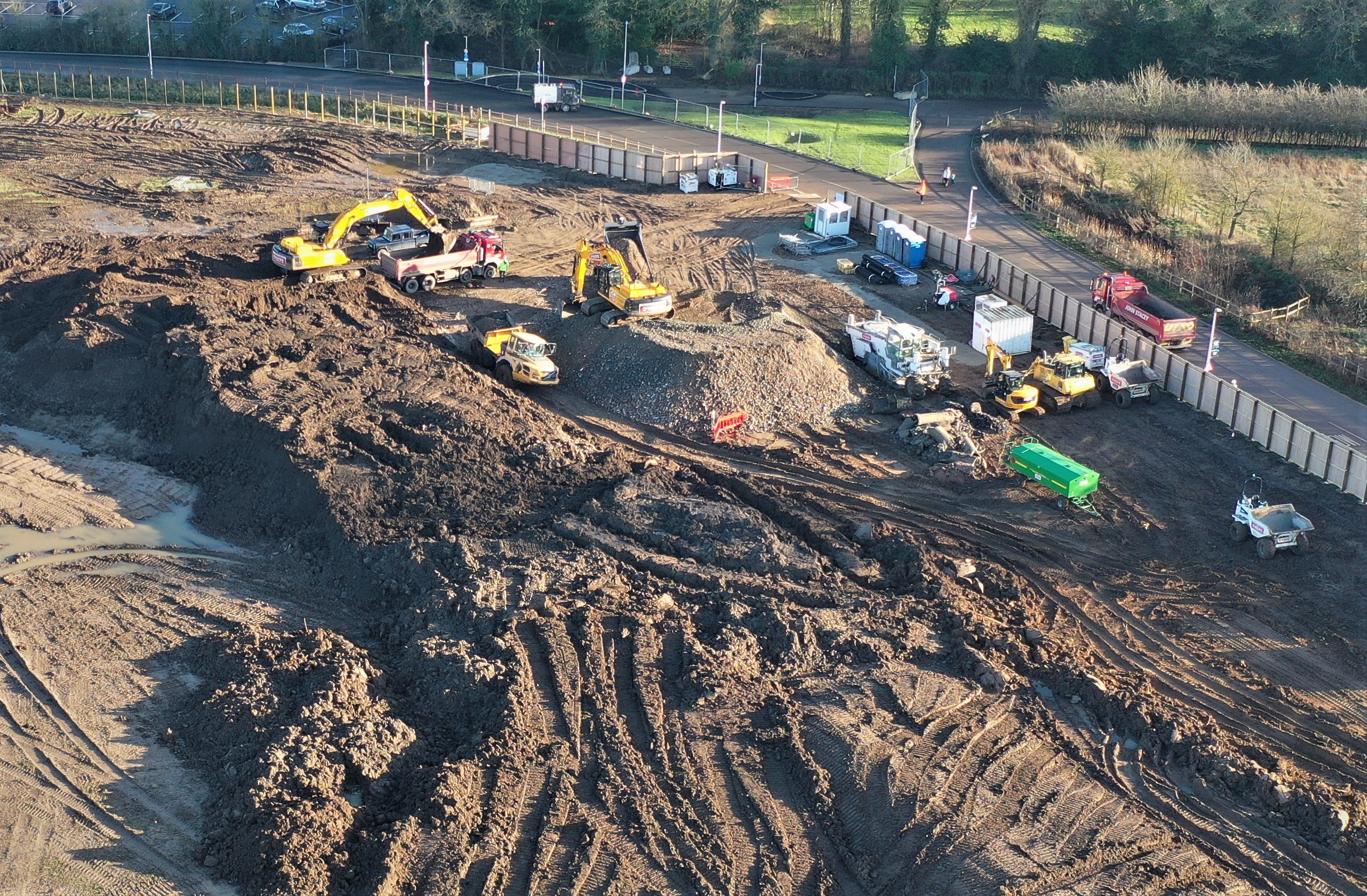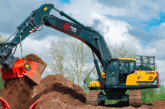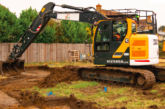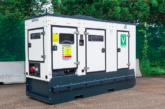
O’Keefe is using lime stabilisation techniques to improve ground conditions on the site of a new film and TV studio complex near Reading.
Working for main contractor Curo Construction, O’Keefe’s enabling works package includes cut-and-fill stabilisation and the construction of pile mats, roads, deep drainage and retaining walls.
Construction on the current phase began in the latter part of last year. The 1 million plus square-foot development comprises 18 soundstages, workshops, office space, a multi-storey car park and external works which requires large-scale cut-and-fill, ground stabilisation and drainage.
During the tender design period, O’Keefe proposed a cost-saving solution entailing soil stabilisation and the use of a proprietary Tubosider storm water system as part of the site drainage element.
The cost and environmental impact of excavating the site and replacing poor soil with imported fill was prohibitive whereas using stabilisation to bring site-won material up to the standards of an engineering fill for reuse was better both economically and environmentally.
Although an economical solution, stabilisation was a huge undertaking, requiring the treatment of 170,000m3 of soil over an area of 695,000m2.

There was also a technical obstacle to overcome. “There was some testing carried out previously on the site-won material and it came back with a high sulphate content,” says Mr Grant. “Sulphates have a chemical reaction with lime which can make the ground heave and swell,” he explains.
O’Keefe visited the site and collected samples of the materials from the cut. These samples were then analysed at O’Keefe’s own in-house geotechnical laboratory and tested alongside trial mixes using lime and ground-granulated blast-furnace slag (GGBS), a well-proven cement substitute, in varying proportions.
After successful testing, O’Keefe offered Curo a mix design to meet the earthworks specification using lime and GGBS. “Lime on its own was sufficient to meet the earthworks specification, but without the addition of GGBS there was no way of eliminating the sulphate issue and the risk of heave,” says Mr Grant.
Besides delivering a solution for the ground improvements, O’Keefe was also required to install 1,500 linear metres of site drainage and more than 600m of retaining walls across the site.
Galvanised steel Tubosider tanks and culverts were used to construct the site’s drainage and rainwater attenuation system. O’Keefe’s solution involved digging out to the bottom of the tank level and creating a 1:2 batter before installing Bentofix geosynthetic clay liners and a shingle base.
It was then a matter of laying the pipes, installing gaskets and clamps before backfilling with 20/40mm stone and compacting. The pipes vary in size from 900mm diameter to 2.2m. The holding tanks ranged in capacity from 1,187m3 to 2280m3.








